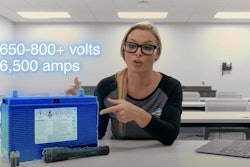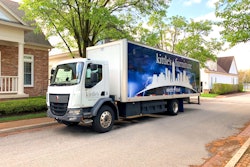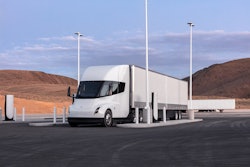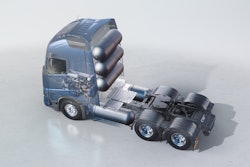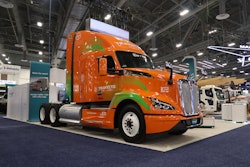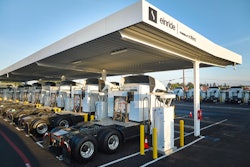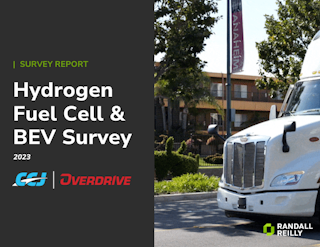
Volvo Trucks has teamed up with Food Forward Inc. a nonprofit organization that fights hunger and reducing overall food waste, to deploy a Volvo VNR Electric truck in Southern California with a mission to remove commercial, private, and agricultural food surplus in the region.
The organization not only aims to distribute surplus produce but also to reduce its overall carbon footprint. Teaming up with Volvo Trucks and its zero-tailpipe emissions truck was a no-brainer.
“Volvo Trucks is dedicated to providing a better, more sustainable future and decarbonizing transportation is a central pillar of that journey,” said Jared Ruiz, regional vice president – West, Volvo Trucks North America. “We are tremendously proud of the work that our battery-electric trucks are doing to decarbonize the industry, but even more compelling is the great work that Food Forward’s fleet is doing to help fight hunger and prevent food waste.”
The National Resources Defense Council claims that nearly 40% of food produced goes unsold and uneaten. Food Forward aims to do something about that. With the assistance of the Volvo VNR Electric, the organization says it can recover and distribute between 80,000 and 120,000 lbs. of surplus produce on a daily basis. Otherwise, it would be sent to landfills where it’ll pile up, decompose, and release climate-damaging methane.
The surplus fruits and vegetables are being distributed to 13 counties, along with seven additional states and tribal lands. Food insecurity is an ongoing problem in Southern California even though the region sees more fresh produce than any other part of the U.S, according to the press release.
The Los Angeles Department of Water and Power (LADWP) provided a grant via its Community Emission Reduction Grant Program (CERGP) to help offset electric truck adaptation and the required infrastructure.
The Volvo VNR Electric features a six-battery pack configuration with a 565 kWh capacity. This translates to a 275-mile range on a single charge. Reaching an 80% charge, depending on factors like distance, route optimization, and driver skill, takes around 90 minutes. The truck’s maintenance and driver training will be handled by TEC Equipment - La Miranda, which is a Volvo Trucks Certified Electric Vehicle Dealership.
[RELATED: 4 Gen Logistics deploys Volvo VNR Electric truck fleet in Southern California]
To help make hot weather work more comfortable for drivers, Volvo Trucks notes that the truck’s electric HVAC system can be used by drivers during loading and unloading while still maintaining the no-idle regulations in communities and the San Pedro Bay ports.
“Food insecurity and climate change are both global issues that are in many ways connected. Because of that, we must find sustainable solutions to address both issues,” said Kristen Johnson, chief operating officer of Food Forward. “We have robust sustainability targets in our mission and transitioning to zero emission vehicles is the next logical step to reduce our carbon footprint.”



